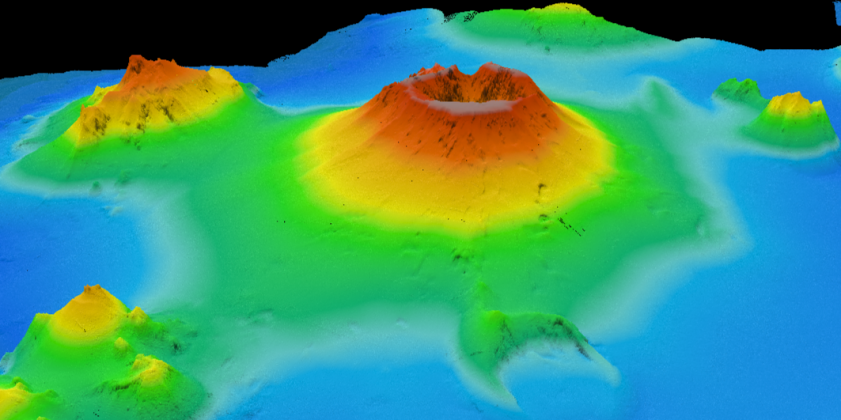In 2022, Tonga’s Hunga Volcano erupted with devastating impact on Tongan island communities and the surrounding marine environment. It was the most powerful eruption on the planet in more than 100 years.
In the wake of the eruption, the seafloor around this submarine volcano, located 65 km north of Tonga’s main island, was blanketed with volcanic ash. This ash is so fine that, when disturbed, it can behave more like soup than sediment. It may even be liquefied and remobilised by earthquakes, continually resurfacing the seafloor.
The ash is flour-like, and these fine volcanic deposits are easily reworked by seafloor currents. When undisturbed, it settles as soft, uncompacted mud and silt into low-lying areas of the seafloor. It also settles into depressions where thick ponds of mud may form. Scattered boulders, launched from the volcano by the eruption and rafted on seafloor sediment flows, sit on top of these mud plains like islands in a dark grey sea.
However, what might look barren is, in fact, slowly coming back to life. This is what the science team onboard CSIRO research vessel (RV) Investigator has crossed the Pacific Ocean to investigate.
To read the full article, click the link below: Life erupting from volcanic mud soup | University of Tasmania

